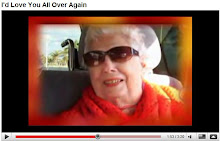Japan radiation detected in at least 15 states and in milk samples in Washington state
How to build a Bunker on a Budget by Ethan A. Huff, staff writer (NaturalNews) Radioactive isotopes unique to the Fukushima disaster are now being detected in at least 15 US states, according to recent reports from CNN (http://www.cnn.com/2011/HEALTH/03/28/radiation.us/index.html). And the Associated Press (AP) has issued a report claiming that milk samples taken in Washington state have tested positive for low levels of the same radioactive component, Iodine-131, raising concerns about the true widespread effects of the Fukushima nuclear fallout (http://www.sfgate.com/cgi-bin/article.cgi?f=/n/a/2011/03/30/state/n145310D86.DTL&tsp=1). The US Environmental Protection Agency (EPA) and various state and local authorities continue to repeat the same empty reassurances that all detected levels of radiation -- whether they be in air, water, or food -- are far below levels of concern, and that people do not need to worry or do anything in response. But is this sound advice? Earlier in the week, several nuclear facilities in North and South Carolina, as well as in Florida, reportedly detected low levels of Iodine-131 in the air (http://www.naturalnews.com/031881_radiation_Fukushima.html). That same radiation has also been detected across the West Coast, as well as in northeastern states like Pennsylvania and Massachusetts, which clearly indicates that Fukushima radiation has made its way throughout the US, at least in very low levels. But now, reports have been issued claiming that milk samples from Washington state have also turned up contaminated with Iodine-131. The levels were allegedly far lower than the US Food and Drug Administration (FDA) concern limits for the radioactive particles, but they are not necessarily safe even at the levels being detected. According to the FDA "Radiation Safety" website, the Derived Intervention Level (DIL) for Iodine-131 is 170 becquerels per kilogram (Bq/kg) (http://www.fda.gov/newsevents/publichealthfocus/ucm247403.htm). A Wall Street Journal report of the milk incident explains that the Washington samples contained only 0.8 picocuries per liter (pCi/l), or 0.03 Bq/kg. That level is clearly far lower than the FDA's DIL for Iodine-131, but is any level of this radiation actually "safe"? And what about the other more serious types of radioactive particles being emitted from Fukushima that authorities appear to not even be looking for? Based on Japanese guidelines for radiation safety, Iodine-131 is the least of our worries. Cesium, uranium, and plutonium all have much lower maximum "concern" thresholds, with plutonium being the most serious. A Bloomberg report explains that just one Bq/kg of plutonium is enough to cause major concern if found in water or milk (http://www.bloomberg.com/news/2011-03-21/japan-sets-safe-limits-for-consuming-radiation-contaminated-food-table-.html). Are authorities testing for plutonium and the other serious radioactive particles that we know have escaped from the Fukushima plant? The mainstream media has mostly abandoned the Fukushima incident in favor of the newly-instigated war in Libya. And yet reports are still continuing to trickle in -- though mostly without much fanfare -- concerning Japan radiation popping up across the US in air, water, and now food. But all the while, the EPA and others repeatedly dismiss the situation as being no big deal, despite the fact that conditions at Fukushima have basically reached a frightening dead end (http://www.naturalnews.com/031894_Fukushima_meltdown.html). As we keep saying here at NaturalNews, preparedness is key. And preparedness, of course, does not involve panic. It does, however, involve using your critical thinking skills to evaluate the seriousness of the situation, consider the anomalies surrounding the official US government position on it, and take appropriate steps to prepare you and your family for whatever may soon come as a result.
by Ethan A. Huff, staff writer (NaturalNews) Radioactive isotopes unique to the Fukushima disaster are now being detected in at least 15 US states, according to recent reports from CNN (http://www.cnn.com/2011/HEALTH/03/28/radiation.us/index.html). And the Associated Press (AP) has issued a report claiming that milk samples taken in Washington state have tested positive for low levels of the same radioactive component, Iodine-131, raising concerns about the true widespread effects of the Fukushima nuclear fallout (http://www.sfgate.com/cgi-bin/article.cgi?f=/n/a/2011/03/30/state/n145310D86.DTL&tsp=1). The US Environmental Protection Agency (EPA) and various state and local authorities continue to repeat the same empty reassurances that all detected levels of radiation -- whether they be in air, water, or food -- are far below levels of concern, and that people do not need to worry or do anything in response. But is this sound advice? Earlier in the week, several nuclear facilities in North and South Carolina, as well as in Florida, reportedly detected low levels of Iodine-131 in the air (http://www.naturalnews.com/031881_radiation_Fukushima.html). That same radiation has also been detected across the West Coast, as well as in northeastern states like Pennsylvania and Massachusetts, which clearly indicates that Fukushima radiation has made its way throughout the US, at least in very low levels. But now, reports have been issued claiming that milk samples from Washington state have also turned up contaminated with Iodine-131. The levels were allegedly far lower than the US Food and Drug Administration (FDA) concern limits for the radioactive particles, but they are not necessarily safe even at the levels being detected. According to the FDA "Radiation Safety" website, the Derived Intervention Level (DIL) for Iodine-131 is 170 becquerels per kilogram (Bq/kg) (http://www.fda.gov/newsevents/publichealthfocus/ucm247403.htm). A Wall Street Journal report of the milk incident explains that the Washington samples contained only 0.8 picocuries per liter (pCi/l), or 0.03 Bq/kg. That level is clearly far lower than the FDA's DIL for Iodine-131, but is any level of this radiation actually "safe"? And what about the other more serious types of radioactive particles being emitted from Fukushima that authorities appear to not even be looking for? Based on Japanese guidelines for radiation safety, Iodine-131 is the least of our worries. Cesium, uranium, and plutonium all have much lower maximum "concern" thresholds, with plutonium being the most serious. A Bloomberg report explains that just one Bq/kg of plutonium is enough to cause major concern if found in water or milk (http://www.bloomberg.com/news/2011-03-21/japan-sets-safe-limits-for-consuming-radiation-contaminated-food-table-.html). Are authorities testing for plutonium and the other serious radioactive particles that we know have escaped from the Fukushima plant? The mainstream media has mostly abandoned the Fukushima incident in favor of the newly-instigated war in Libya. And yet reports are still continuing to trickle in -- though mostly without much fanfare -- concerning Japan radiation popping up across the US in air, water, and now food. But all the while, the EPA and others repeatedly dismiss the situation as being no big deal, despite the fact that conditions at Fukushima have basically reached a frightening dead end (http://www.naturalnews.com/031894_Fukushima_meltdown.html). As we keep saying here at NaturalNews, preparedness is key. And preparedness, of course, does not involve panic. It does, however, involve using your critical thinking skills to evaluate the seriousness of the situation, consider the anomalies surrounding the official US government position on it, and take appropriate steps to prepare you and your family for whatever may soon come as a result.
Get yours now , don't procrastinate on this! Ray Fernandez ----- Original Message ----- From: "Nukepills.com" <mhtml:%7B3244E316-74EC-42BD-B841-565B31FE966A%7Dmid://00001329/%21x-usc:mailto:info@nukepills.com> To: <mhtml:%7B3244E316-74EC-42BD-B841-565B31FE966A%7Dmid://00001329/%21x-usc:mailto:Ray@cyberray.com> Sent: Friday, April 01, 2011 12:39 PM Subject: online order Dear Raul Fernandez , Thank you for your order on 4/1/2011. Your Order Number is: 16138 To view and print your order please visit this URL: https://www.nukepills.com/shop/ If have you any questions please call us at 1-866-283-3986 M-F 9-5pm EST (excluding holidays). Thank you, Nukepills.com Related:http://naturalnews.tv/v.asp?v=604AB3FA803FF3647DF6E34EC5E8C8A0 http://www.naturalnews.com/ http://www.naturalnews.com/031909_radiation_milk.htmlNaturalNews.com printable article
















4 comments:
anyone talking about Fukushima's meltdown is "fearmongering."
Japan's nuclear disaster preparedness plans were written by complete morons.
Learn more: http://www.naturalnews.com/031912_Fukushima_cesium.html#ixzz1INji4CJq
There's nothing to worry about according to your government! Don't be concerned about radiation. It's invisible, so it must be safe!
Most of Florida's EPA radiation monitors don't show any results beyond March 18. Why??
What's that sulfury, powdery smell in Florida and the haze in the air?
When Japan has a large release of radioactive particles, the jet stream flow blows it east. The United States is the first large land mass it reaches, meaning the U.S. could be getting the strongest share of radiation particulates.
Berkeley University in California measured "low" amounts of cesium 137, too, which has the half life of about 30 years.
Where are the good old-fashioned journalists who would delve into stories and find out the truth about how much radiation we're really getting in the U.S.?
Post a Comment